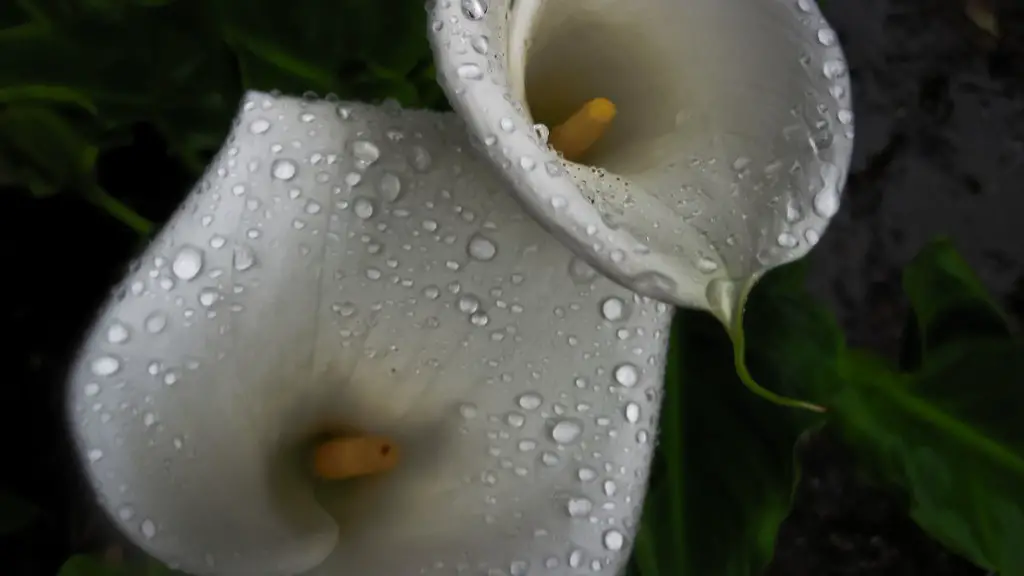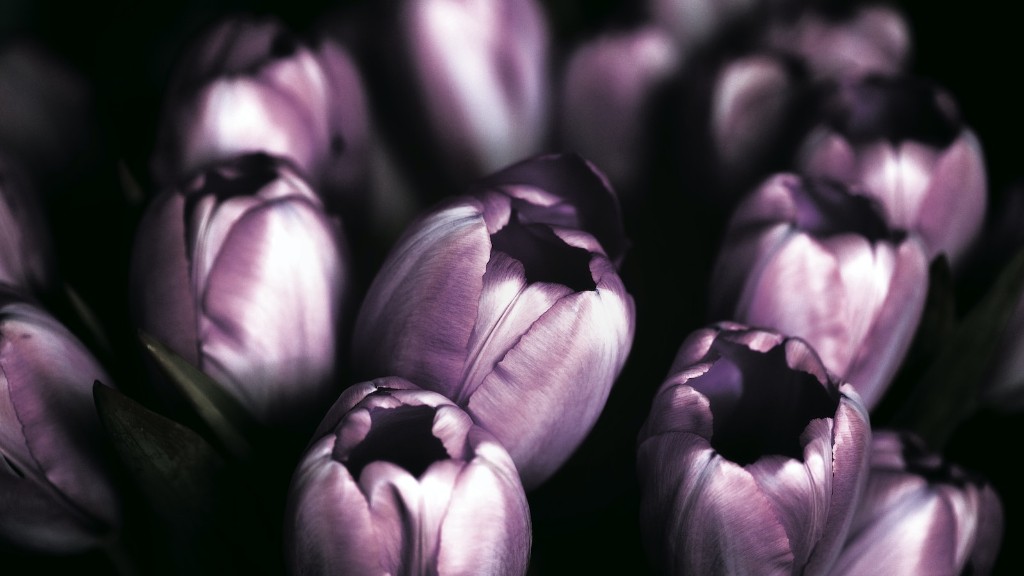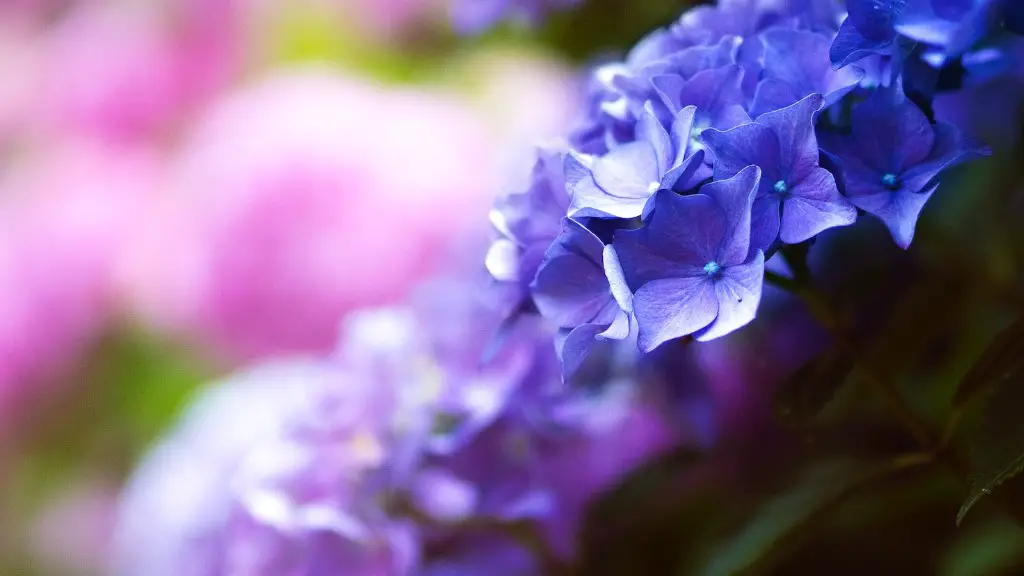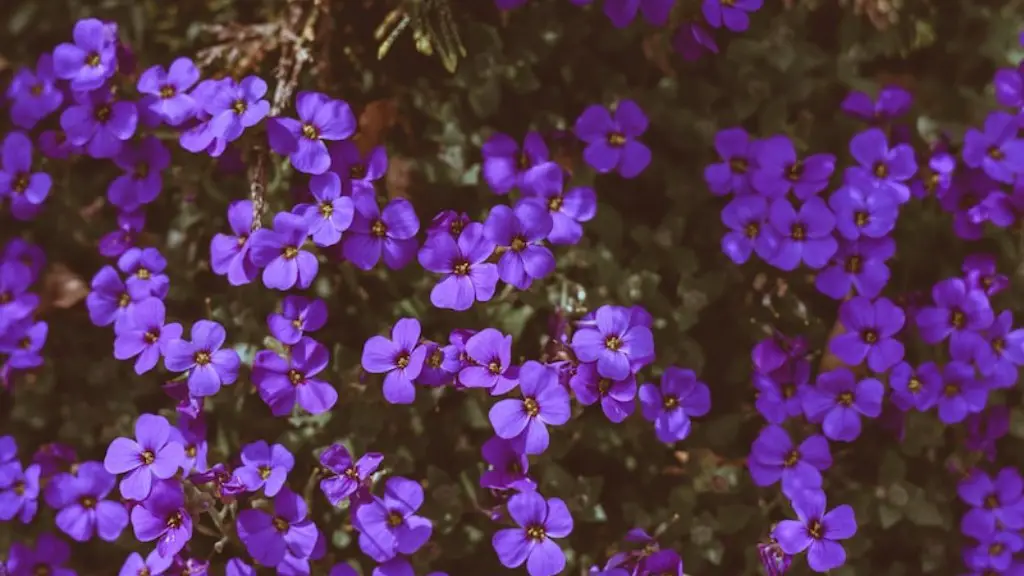Calla lilies reproduce by growing new bulb offsets from the parent plant. The offsets are small bulbs that form at the base of the plant. These offsets can be replanted to form new plants. Calla lilies can also be propagated by dividing the root ball of an established plant. This can be done in the spring or fall.
The most common way that calla lilies reproduce is through rhizomes, which are underground stems that send out new roots and leaves. Calla lilies can also be propagated by dividing the rhizomes or by taking root cuttings.
Do calla lilies multiply?
Calla lilies are a great addition to any garden, and they are very easy to care for. Calla lilies spread by multiplying and creating other bulbs, which can be dug up and replanted in different locations. While these plants spread, they do so in a manner which is quite easy to control.
Calla lilies are beautiful flowers that produce tan seed pods after they have bloomed. Each pod can contain at least one or two seeds, so be sure to collect them after they have dried on the plant. It can take several months for the calla lily pod to mature, so be patient!
Do calla lilies make seeds
If you’re looking to harvest calla lily seeds, you’ll need to be patient. Each seed pod contains at least one or two seeds, but the pod itself can take a few months to mature. Once it’s matured, you can then detach the pod and begin the process of planting the seeds. Keep in mind that the seeds themselves need a dormancy period before planting, which is typically around three months. With a little bit of care and patience, you can successfully grow calla lilies from seed.
Calla lily bulbs are a great way to keep your garden productive and establish new plants. By digging up calla lilies, you can multiply them underground and keep them healthy and vigorous.
Do you have to dig up calla lily bulbs every year?
Calla lilies (Zantedeschia spp) are tender perennials. Their rhizomes must be dug up in fall and stored indoors over the winter months. Calla lilies can be planted outdoors in the spring, after the last frost date.
Calla lilies are a beautiful addition to any garden and can last for many years with proper care. Most calla lilies go dormant in the fall and will come back in the spring. Be sure to keep an eye on your calla lilies and give them the proper care they need to thrive for years to come.
Should I cut off lily seed pods?
Many gardeners choose to deadhead their daylilies to encourage more flowering. Deadheading simply involves removing the spent flowers and seed pods from the plant. This process is time consuming, but it is not difficult. You don’t need to deadhead your daylilies every day, but it is important to do it regularly to keep the plants looking their best.
If you live in a warm climate, you can leave your calla rhizomes in the ground during the winter. Otherwise, you will need to remove the leaves from your plants and cut the stems to one or two inches tall before your first freeze. Once the cold weather hits, you will need to dig up the rhizomes and put them in a warm, dry place where the temperature stays between 65 and 75°F.
What do you do when calla lilies have finished flowering
Once flowering has finished, continue feeding and watering calla lily for several weeks, still taking care not to over-water, until the leaves start to die back. Bring potted plants indoors before the frosts and leave in the pot whilst dormant.
What does this mean? It’s like a yellow light tan.
What does a canna lily seed pod look like?
The pods of the canna lily are green and spiky, and usually contain one to three seeds. The pods are harmless in spite of their outward appearance. Canna lily seed harvesting should be done once these seed pods become dry. When the pods open up revealing the black seeds inside, you can easily squeeze them out.
Male flowers produce a lot of pollen, while female flowers are located lower on the plant, near the bottom. This helps to ensure that the plants will be pollinated and can produce offspring.
Do lilies self multiply
As the plant matures, it produces offsets that eventually split into new bulbs, creating a clone of the original plant. This process continues indefinitely, making the lily a perfect plant for gardeners who want to propagate their own plants.
Most growers prefer to divide calla lilies in spring, especially in warm climates where the rhizome can be left in the ground year-round. In cooler areas, it might be preferable to divide the rhizomes in late summer or fall when they are dug up for winter storage.
How fast do calla lilies spread?
The calla lily is a beautiful flower that typically grows to between 18 and 24 inches once the foliage has leafed out fully. However, in some cases it can spread to as wide as 36 inches. Calla lilies are perennials, which means that they will not grow taller in the following year than they did the previous year. In warm climates, they may even stay the same height, except when they are blooming.
Storing calla lily bulbs is easy – just put them in a cool, dry place. You can store them in a paper bag, or in layers in a cardboard box. Be sure to label the storage container so you’ll know what’s inside. And don’t forget to water the bulbs occasionally so they don’t dry out.
Do you cut back calla lilies in the fall
Calla lily rhizomes should be lifted in fall after the first frost kills back the foliage. They should be stored for winter and then replanted in spring after soil temperatures warm up.
Callas are easy to control when grown in pots and they can’t become invasive like they might in garden beds. This is yet another advantage to growing these lovely flowers in containers.
Warp Up
As perennial plants, calla lilies will typically reproduce through their rhizomes, or underground stems. When the plant flowers and goes to seed, the rhizome will also produce new offsets, or small bulbs, that can be replanted to produce new calla lilies.
Calla lilies reproduce through a process called apomixis, which is a form of asexual reproduction. Once the plant flowers, the ovules (female reproductive cells) are fertilized by the pollen (male reproductive cells) and the seed begins to develop. After the seed matures, the plant will produce a new plant that is genetically identical to the parent plant. This process does not require pollination by insects or other animals, and can happen without any outside help.





